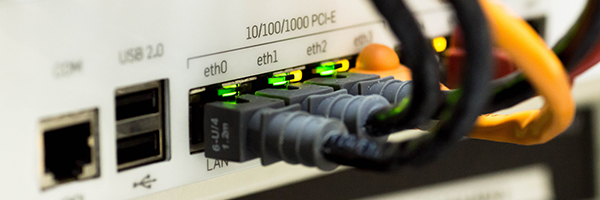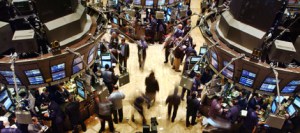Volatility

April 4, 2023 | AG, Daily JAM, GDX, GLD, GOLD, Jubak Picks, Perfect Five-ETFs, Volatility |
Gold for June delivery closed at 2039.00 an ounce on the Comex today. That’s not too far away from the all-time record high of $2,070 an ounce. The move above $2,000 an ounce and any breach of the record at $2070 could trigger a rally as traders short gold buy to cover positions. That could well be true, but I’d note that this forecast of a gold rally is coming from traders long gold who are trying to talk a rally into being.

March 30, 2023 | ADBE, Daily JAM, Jubak Picks, MSFT, NVDA, Top 50 Stocks, Volatility |
In Step #3 of my Special Report: 5 Moves for the Next 5 Months, on March 24 I added three Big Tech stocks–Microsoft (MSFT), Adobe (ADBE), and Nvidia (NVDA) to my Volatility Portfolio ahead of earnings season. My theory, explained in that post was that we were facing a tough earnings season for most stocks and that reliable earnings growth from Big Tech would make those stocks look like a safe haven in a period when the Standard & Poor’s 500 as a whole was projected to show a drop in earnings. (I also owned up to my mistake in selling Nvidia back on February 16. That was just wrong. More on why I was wrong and why I’ve changed my mind on that in a post tomorrow or so.)

March 30, 2023 | Daily JAM, SCHW, Videos, Volatility |
Today’s Quick Pick is Charles Schwab (NYSE: SCHW) Put Options. Put options will become more valuable as the stock goes down in price. This has been a lousy year for Schwab with the stock currently down about 34% YTD. The reason for this is Schwab makes most of its money on the interest rate spread. Schwab stashes “excess” cash in customer accounts in sweep accounts that pay a very low rate of interest, and Schwab invests that cash in Treasuries, mortgage-backed assets, etc. at higher yields. This works when the overall rate of interest is low because customers have a relatively small incentive to actively move their cash to higher-yielding vehicles. When the Fed raises interest rates, however, some people who had formerly kept their money in these low-return accounts will move their cash to higher-yielding alternatives (often still within Schwab.) This reduces the interest spread that Schwab collects since the company now has to pay more in interest to retain those customers. In addition, Schwab invested that cash in long-term Treasuries and mortgage-backed assets, leaving the company sitting on a lot of unrealized losses in its bond portfolios as bond prices fell as interest rates moved higher. I question whether or not Schwab will be able to meet analysts’ expectations and/or warn on future results when it announces earnings on April 17. I would suggest Put options before the announcement. I added the May 19 Put to my Volatility Portfolio yesterday. For more options plays, subscribe to JubakAM.com.

March 29, 2023 | VIX, Volatility |
Today March 29, the VIX dropped again, losing another 4.01% to 19.10. So I’ll be buying the June 21 Call Option with a strike price of 23 tomorrow. A contract for 100 shares closed at $305 today. This buy will go into my Volatility Portfolio.

March 28, 2023 | Daily JAM, SCHW, Top 50 Stocks, Volatility |
This is shaping up as a very tough earnings season for all financial stocks. But no stock looks more exposed to a short-term hit than Charles Schwab (SCHW.) Which is why I’m adding the May 19 Put Options with a strike of $52.50 to my Volatility Portfolio tomorrow, March 29.

March 13, 2023 | Daily JAM, VIX, Volatility |
Back on March 6, I bought Call Options on the CBEO S&P 500 Volatility Index (VIX) at a strike of 23 for the May 17 and June 21 expirations. My logic was that at 18 or so, the VIX was trading at a level that basically ignored all of the potential negative news and trends visible in the financial market for the next couple of weeks. I certainly didn’t count on the collapse of Silicon Valley Bank or the wave of fear that has today overwhelmed shares of every regional and fintech bank. I think the odds are that the crisis won’t go away, but that the extreme fear of today will turn into something less extreme over the next day or so. Fear tends to work like that in the financial markets: When investors and traders discover the sky has fallen today, they get more optimistic (not always reasonably) about tomorrow. So I’m selling the May 17 Call Option on the VIX that I bought on March 6. The purchase price that day was $$94 per contract. The price today closed at $420 per contract. That’s a gain of 116%.

March 6, 2023 | Daily JAM, VIX, Volatility |
The CBOE S&P 500 Volatility Index (VIX) has dropped back near 18–the index was at 18.50 as of noon New York time on Monday, March 6–despite what looks like a month or two of potential volatility ahead. So, as of this morning, I’m buying Call Options on the VIX for May 17 with a strike price of 23 (at a cost of $197 a contract) and on the June 23 contract with a strike price of 23 (at a cost of $254 a contract) for my Volatility Portfolio.

February 16, 2023 | CHPT, Daily JAM, DIS, EVGO, Jubak Picks, Millennial, NVDA, Top 50 Stocks, TWLO, Volatility |
The rally on February 15 sure looked like a speculative blowout of the kind that often signals a market top. For me, it was the last straw and I’m selling into the rally. This post tells you what I’m selling and how I arrived at these decisions. But first, a few words on Wednesday’s move.

February 8, 2023 | Daily JAM, EQNR, Jubak Picks, Volatility |
Today, Wednesday, February 8, Equinor (EQNR) reported a record $74.9 billion adjusted operating profit for 2022. That more than doubled the previous record. If you’re looking to add an energy stock to your portfolio ahead of a year that looks likely to be a good one for energy stocks, I’d suggest Equinor. I’ll be adding it to my Jubak Picks Portfolio tomorrow with a target price of $40 a share.

February 6, 2023 | Daily JAM, Perfect Five-ETFs, Videos, Volatility |
Today I posted my two-hundred-and-thirty-third YouTube video: Trend of the Week China Accelerates This week’s Trend of the Week: China Accelerates. There is a horrific death toll in China as the country’s COVID policy changed dramatically, allowing COVID cases to surge wildly, spreading throughout the country and killing possibly a million people, but ultimately resulting (everyone hopes) in immunity. Now, Bloomberg is seeing a pick-up in China’s manufacturing activity and predicts 5.8% GDP growth in 2023, a huge bump from 3% in 2022. You can see this upswing by looking at the iShares China Large-Cap ETF (Nasdaq: FXI) as the market anticipates this GDP growth and a likely stimulus from the People’s Bank of China to make up for problems relating to the COVID crash. The iShares MSCI Emerging Markets ETF (EEM), which is an ETF that tracks at emerging markets as a whole and is heavily influenced by China, is also back on the upswing. I had been shorting EEM as China’s economy was dragging markets down, but I’ll be ending that short now. The bad thing about China being back is that it will start exporting inflation to the global economy, likely to the tune of about 100 basis points. Whether or not this will change the Fed’s timeline for pausing interest rates is unclear at this point. We can expect higher commodity prices, energy prices, and eventually, consumer prices as China continues its upswing. To follow more ETFs, go to my paysite, JubakAM.com.

January 30, 2023 | Daily JAM, GDX, GDXJ, GLD, GOLD, Jubak Picks, Perfect Five-ETFs, Volatility |
With the Federal Reserve seemingly winding down its cycle of interest rate increases, a stronger dollar is no longer the big currency market story. Gold is. Gold is back. And for at least the next 3 to 6 months.

January 29, 2023 | Daily JAM, Millennial, Volatility |
An 11% rally in a sector leader, like Tesla (TSLA) on Friday translated into a jump in other stocks in the sector. But not all equally. The move was most clearly concentrated in shares of electric vehicle charging stocks.














